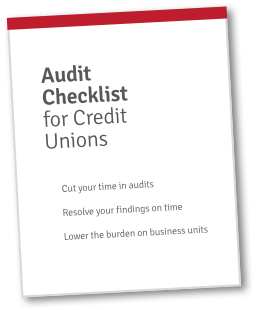It’s easy to forget what’s possible with the most basic tools out there. The first light bulbs were dim, inefficient, and lasted only a few weeks. The first space flights and moon landing were calculated with little more than some pens and paper. Seat belts in cars weren’t standard until almost the ‘70s.
Nowadays, solar-powered, energy-efficient LED bulbs may well outlive some homes. Aeronautics are calculated entirely by computer. Car shopping today reveals a host of luxurious, automated glory—backup cameras are as standard as seat belts used to be!
If you’re a disciple of the old ways, that’s fine. It worked back then, and it can still work today. If you’re interested in staying current, or even one step ahead, you may be better served by the tools that set the new standard. After all, they tend to be safer, more convenient, and offer more utility than their old-school counterparts.
What do Auditing Tools Offer?
We’ve spoken with enough smaller credit unions to know that audits can be successfully navigated with little more than a spreadsheet, some post its, and emails. We can’t fault a credit union that can keep up without the latest gear. Frankly, if it works without a hitch, then our auditing tools aren’t for them.Free Webinar
Learn a structured process to manage the findings process. Resolve audit findings — on time and as expected. Escape from the pain of managing via spreadsheet and cut your administrative time in half.
Sign Up Now >There is a question of risk, of course. Spreadsheets can do amazing things, but they’re finicky and require a healthy amount of maintenance and assiduous data entry. Sticky notes? Well, they’re sticky notes. Where would we be without them? They’re easily misplaced, but we admit, we keep some in our office as well. Finally, email is a fast and efficient form of communication. But if we’ve learned one thing from politics in the last few years, it’s that any question of email security can quickly get out of hand; using email for audit purposes opens the whole email system to legal discovery.
Auditing tools offer a centralized platform designed to reduce headaches during the audit process. Especially with larger credit unions or those that experience more frequent audits, the ease of use and time saved by using auditing tools pays for itself very quickly.
With Redboard, you can involve management, staff, and inside and outside counsel, all on the same platform. You can quickly assess who’s doing what and when. You can compile and double-check your documents to make sure you’re submitting everything correctly and on time. You can drastically reduce your legal risk on our secure platform, and also mitigate the risk of missing items, providing inconsistent or conflicting answers, or losing track of the many moving parts during an audit.
To boot, Redboard creates a robust audit trail that tracks inquiries and modifications to examination questions and responses. We aim to thoroughly show your work.







